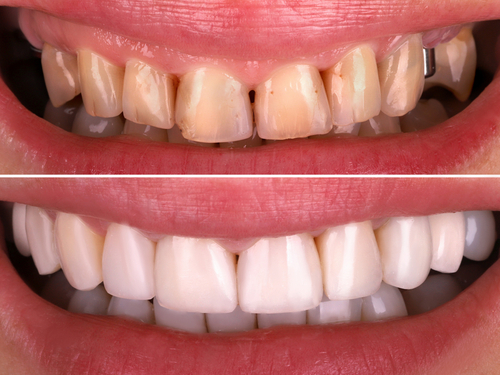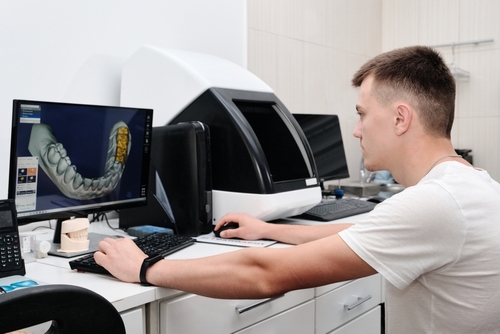A captivating smile is often the first thing people notice about us, and it has the power to leave a lasting impression. Behind that gleaming smile are the intricate details of dental restorations, a delicate balance between art and science. In recent years, dental technology has witnessed a revolution with the introduction of CAD/CAM dentistry. This cutting-edge approach has transformed the way we approach dental restorations, making them more precise, efficient, and aesthetically pleasing. In this blog post, we will delve into the world of dental restorations, exploring the art and science behind the practice and the role that CAD/CAM technology plays in this evolution.
The Art of Dental Restorations
Dental restorations are as much an art as they are a science. Dentists, like skilled artists, must balance form and function to recreate natural teeth. Here are some of the artistic aspects of dental restorations:
- Aesthetic Harmony: Dentists must consider the unique characteristics of a patient’s smile, including tooth shape, size, color, and alignment. Achieving an aesthetically pleasing result requires a keen eye for detail and the ability to create restorations that seamlessly blend with the surrounding natural teeth.
- Tooth Sculpting: Restoring teeth is akin to sculpting, with the dentist carefully shaping the restoration to match the contours of the natural teeth. This process is particularly crucial for front teeth, where any deviation from a natural appearance is highly noticeable.
- Customization: Every dental restoration is custom-made for the individual patient. This means that the dentist needs to consider not only the physical characteristics of the tooth but also the patient’s facial features, gender, and age.
The Science of Dental Restorations

Dental restorations are firmly rooted in science. Dentists rely on their knowledge of dental anatomy, materials science, and the latest advancements in technology to ensure the longevity and functionality of the restorations. Here are some scientific aspects of dental restorations:
- Tooth Structure: Dentists have an intricate understanding of dental anatomy, enabling them to accurately diagnose the extent of damage to a tooth and plan for its restoration. This knowledge is crucial for creating restorations that mimic natural teeth.
- Biocompatible Materials: The choice of materials for dental restorations is based on the principles of biocompatibility. Restorative materials must be safe for use in the oral cavity and should not trigger adverse reactions in the patient’s body.
- Mechanical Strength: Dental restorations must withstand the forces of biting and chewing. Dentists use materials that offer the necessary mechanical strength to ensure the longevity of the restoration, while also preventing damage to the opposing teeth.
The Role of CAD/CAM Dentistry

CAD/CAM, which stands for Computer-Aided Design and Computer-Aided Manufacturing, is a game-changing technology in the field of dental restorations. This technology combines the precision of computer modeling with the efficiency of automated manufacturing. Here’s how Cad cam dentistry is transforming the world of dental restorations:
- Digital Impressions: Traditionally, dental impressions involved messy, uncomfortable molds of the teeth. With CAD/CAM, dentists can now take digital impressions quickly and comfortably. This digital data is used to create 3D models of the teeth, allowing for precise planning of restorations.
- Customization: CAD/CAM technology enables dentists to design restorations with an incredible level of precision. The 3D models can be customized to match the patient’s unique oral anatomy, ensuring an optimal fit and aesthetic result.
- Speed and Efficiency: One of the most significant advantages of CAD/CAM dentistry is the speed of fabrication. Restorations can be designed and milled in a single appointment, reducing the overall treatment time and minimizing the need for temporary restorations.
- Reduced Human Error: CAD/CAM technology minimizes the risk of human error. Computer-guided design and manufacturing processes ensure that restorations are consistently accurate, leading to higher success rates.
- Aesthetic Precision: CAD/CAM systems offer a wide range of tooth-colored materials, allowing dentists to create restorations that closely mimic the natural teeth. The technology helps achieve the perfect blend of science and art in dental restorations.
Conclusion
Dental restorations represent a perfect blend of art and science. Dentists must harness their artistic skills to create aesthetically pleasing restorations while relying on scientific knowledge to ensure their functionality and longevity. The advent of CAD/CAM dentistry has elevated the field, making it more precise, efficient, and patient-friendly. This technology not only enhances the quality of dental restorations but also allows for a more pleasant patient experience.
As we look to the future of dentistry, the art and science of dental restorations, coupled with CAD/CAM technology, will continue to evolve. This evolution promises to deliver even more beautiful smiles and healthier teeth to patients around the world, showcasing the ever-expanding horizons of dental artistry and the boundless potential of dental science.





